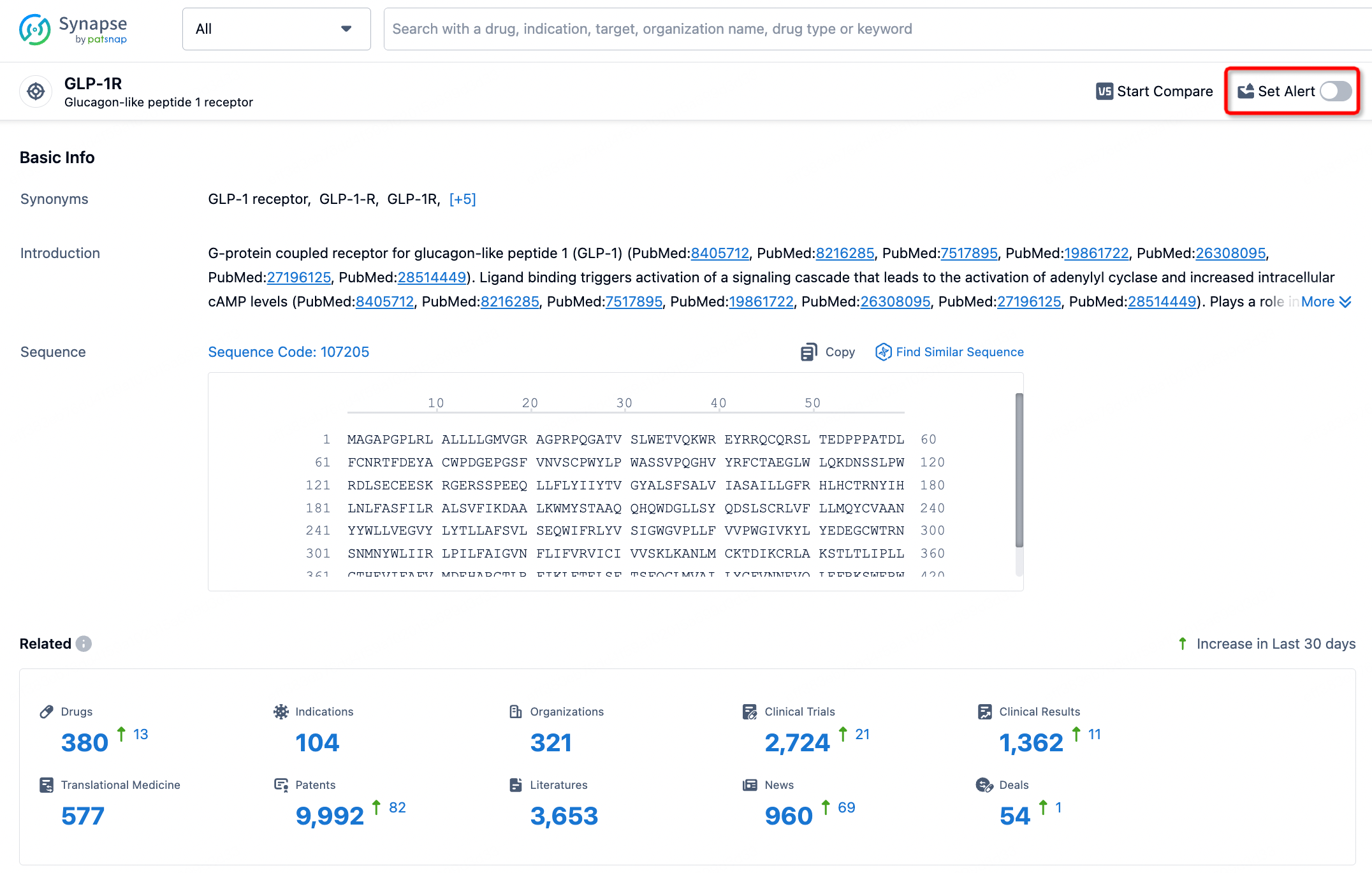Request Demo
What are S100P inhibitors and how do they work?
25 June 2024
S100P inhibitors represent a promising area of research with significant potential in the treatment of a variety of diseases, particularly cancer. S100P is a member of the S100 family of proteins, which are known for their role in regulating a variety of cellular processes such as cell cycle progression and differentiation. The overexpression of S100P has been linked to the progression of numerous cancers, including breast, pancreatic, and prostate cancers, making it a prime target for therapeutic intervention. In this article, we will explore what S100P inhibitors are, how they work, and their current and potential applications in medicine.
S100P is a calcium-binding protein that plays a crucial role in the regulation of various cellular processes. In normal physiological conditions, S100P is involved in processes such as cell growth, motility, and survival. However, in pathological conditions, particularly in cancer, its expression is significantly upregulated. This upregulation contributes to tumor progression and metastasis by promoting cell proliferation, inhibiting apoptosis (programmed cell death), and enhancing the invasive capabilities of cancer cells.
S100P inhibitors are compounds designed to specifically target and inhibit the function of the S100P protein. By doing so, these inhibitors can potentially disrupt the pathological processes driven by S100P overexpression. The mechanism by which S100P inhibitors work involves binding to the S100P protein, thereby preventing it from interacting with its target molecules and receptors. This inhibition can lead to a reduction in cancer cell proliferation, increased apoptosis, and decreased metastasis.
One of the primary mechanisms of action of S100P inhibitors is the disruption of the interaction between S100P and its receptor, RAGE (Receptor for Advanced Glycation End-products). The S100P-RAGE interaction is known to activate various signaling pathways that promote cancer cell survival and invasion. By inhibiting this interaction, S100P inhibitors can block these pro-tumorigenic signaling pathways, thereby reducing cancer cell growth and spread.
S100P inhibitors are being researched primarily for their potential use in cancer therapy. The overexpression of S100P has been observed in a wide range of cancers, making it a universal target for therapeutic intervention. In preclinical studies, S100P inhibitors have shown promising results in reducing tumor growth and metastasis in various cancer models.
In breast cancer, for example, the overexpression of S100P is associated with poor prognosis and increased resistance to chemotherapy. By targeting S100P with specific inhibitors, researchers aim to enhance the sensitivity of cancer cells to chemotherapy, thereby improving treatment outcomes. Similarly, in pancreatic cancer, which is known for its aggressive nature and poor prognosis, S100P inhibitors have demonstrated potential in reducing tumor growth and metastasis.
Beyond cancer, S100P inhibitors may also have applications in other diseases where S100P plays a pathological role. For instance, S100P has been implicated in inflammatory diseases and conditions such as rheumatoid arthritis and inflammatory bowel disease. By inhibiting S100P, it may be possible to reduce inflammation and alleviate symptoms in these conditions.
While the research on S100P inhibitors is still in its early stages, the results so far are encouraging. Several S100P inhibitors have been identified and tested in preclinical studies, showing promising anti-tumorigenic effects. However, further research is needed to fully understand the mechanisms of action of these inhibitors and to evaluate their safety and efficacy in clinical trials.
In conclusion, S100P inhibitors represent a novel and promising approach to the treatment of cancers and potentially other diseases characterized by S100P overexpression. By specifically targeting and inhibiting the function of the S100P protein, these inhibitors have the potential to disrupt the pathological processes driven by S100P, thereby reducing tumor growth and metastasis. While more research is needed to bring these inhibitors into clinical practice, the current findings provide a strong foundation for future studies and potential therapeutic applications.
S100P is a calcium-binding protein that plays a crucial role in the regulation of various cellular processes. In normal physiological conditions, S100P is involved in processes such as cell growth, motility, and survival. However, in pathological conditions, particularly in cancer, its expression is significantly upregulated. This upregulation contributes to tumor progression and metastasis by promoting cell proliferation, inhibiting apoptosis (programmed cell death), and enhancing the invasive capabilities of cancer cells.
S100P inhibitors are compounds designed to specifically target and inhibit the function of the S100P protein. By doing so, these inhibitors can potentially disrupt the pathological processes driven by S100P overexpression. The mechanism by which S100P inhibitors work involves binding to the S100P protein, thereby preventing it from interacting with its target molecules and receptors. This inhibition can lead to a reduction in cancer cell proliferation, increased apoptosis, and decreased metastasis.
One of the primary mechanisms of action of S100P inhibitors is the disruption of the interaction between S100P and its receptor, RAGE (Receptor for Advanced Glycation End-products). The S100P-RAGE interaction is known to activate various signaling pathways that promote cancer cell survival and invasion. By inhibiting this interaction, S100P inhibitors can block these pro-tumorigenic signaling pathways, thereby reducing cancer cell growth and spread.
S100P inhibitors are being researched primarily for their potential use in cancer therapy. The overexpression of S100P has been observed in a wide range of cancers, making it a universal target for therapeutic intervention. In preclinical studies, S100P inhibitors have shown promising results in reducing tumor growth and metastasis in various cancer models.
In breast cancer, for example, the overexpression of S100P is associated with poor prognosis and increased resistance to chemotherapy. By targeting S100P with specific inhibitors, researchers aim to enhance the sensitivity of cancer cells to chemotherapy, thereby improving treatment outcomes. Similarly, in pancreatic cancer, which is known for its aggressive nature and poor prognosis, S100P inhibitors have demonstrated potential in reducing tumor growth and metastasis.
Beyond cancer, S100P inhibitors may also have applications in other diseases where S100P plays a pathological role. For instance, S100P has been implicated in inflammatory diseases and conditions such as rheumatoid arthritis and inflammatory bowel disease. By inhibiting S100P, it may be possible to reduce inflammation and alleviate symptoms in these conditions.
While the research on S100P inhibitors is still in its early stages, the results so far are encouraging. Several S100P inhibitors have been identified and tested in preclinical studies, showing promising anti-tumorigenic effects. However, further research is needed to fully understand the mechanisms of action of these inhibitors and to evaluate their safety and efficacy in clinical trials.
In conclusion, S100P inhibitors represent a novel and promising approach to the treatment of cancers and potentially other diseases characterized by S100P overexpression. By specifically targeting and inhibiting the function of the S100P protein, these inhibitors have the potential to disrupt the pathological processes driven by S100P, thereby reducing tumor growth and metastasis. While more research is needed to bring these inhibitors into clinical practice, the current findings provide a strong foundation for future studies and potential therapeutic applications.
How to obtain the latest development progress of all targets?
In the Synapse database, you can stay updated on the latest research and development advances of all targets. This service is accessible anytime and anywhere, with updates available daily or weekly. Use the "Set Alert" function to stay informed. Click on the image below to embark on a brand new journey of drug discovery!
AI Agents Built for Biopharma Breakthroughs
Accelerate discovery. Empower decisions. Transform outcomes.
Get started for free today!
Accelerate Strategic R&D decision making with Synapse, PatSnap’s AI-powered Connected Innovation Intelligence Platform Built for Life Sciences Professionals.
Start your data trial now!
Synapse data is also accessible to external entities via APIs or data packages. Empower better decisions with the latest in pharmaceutical intelligence.


